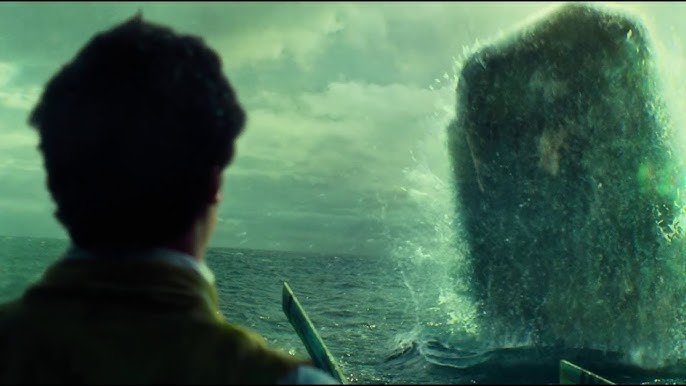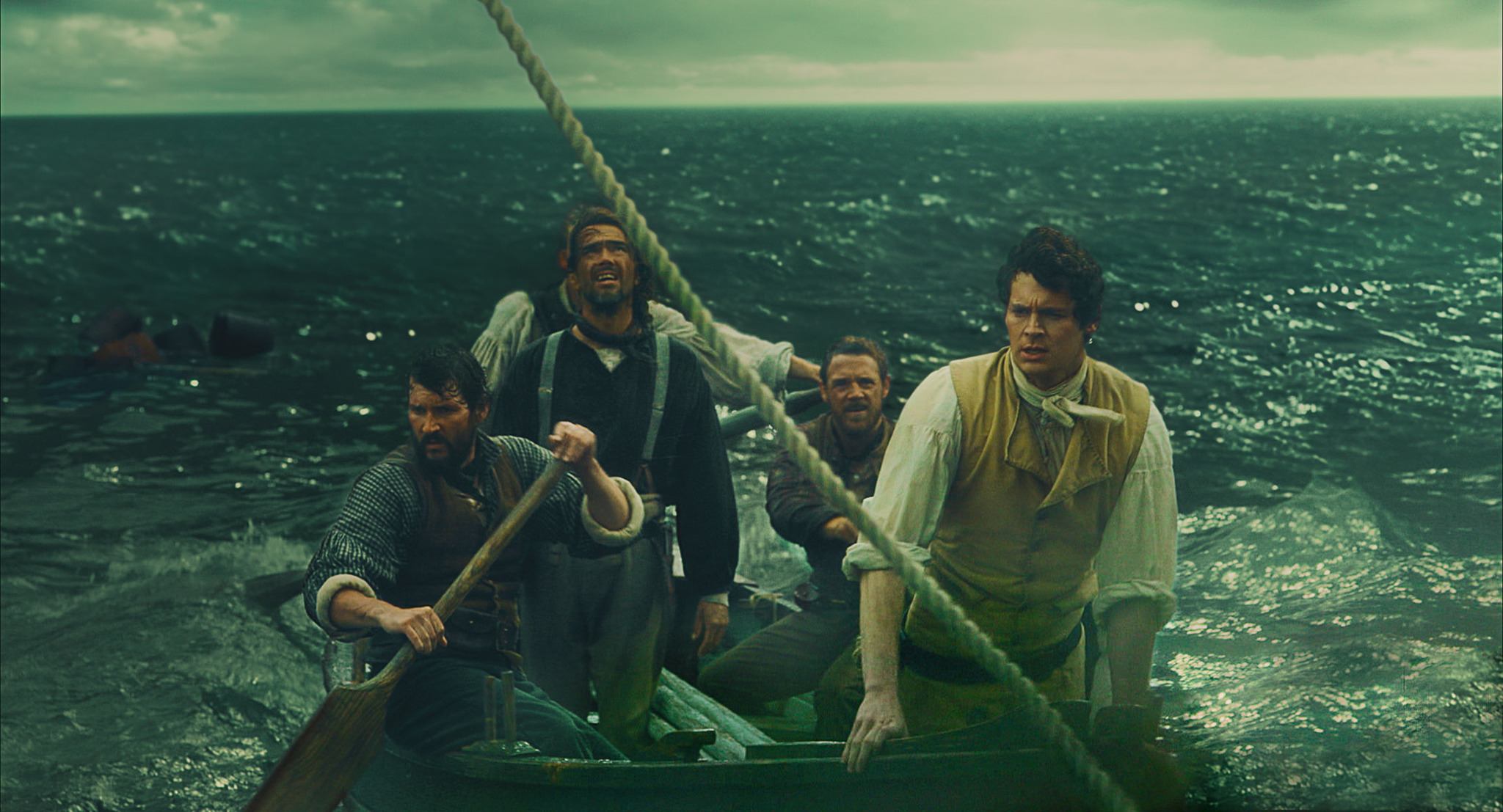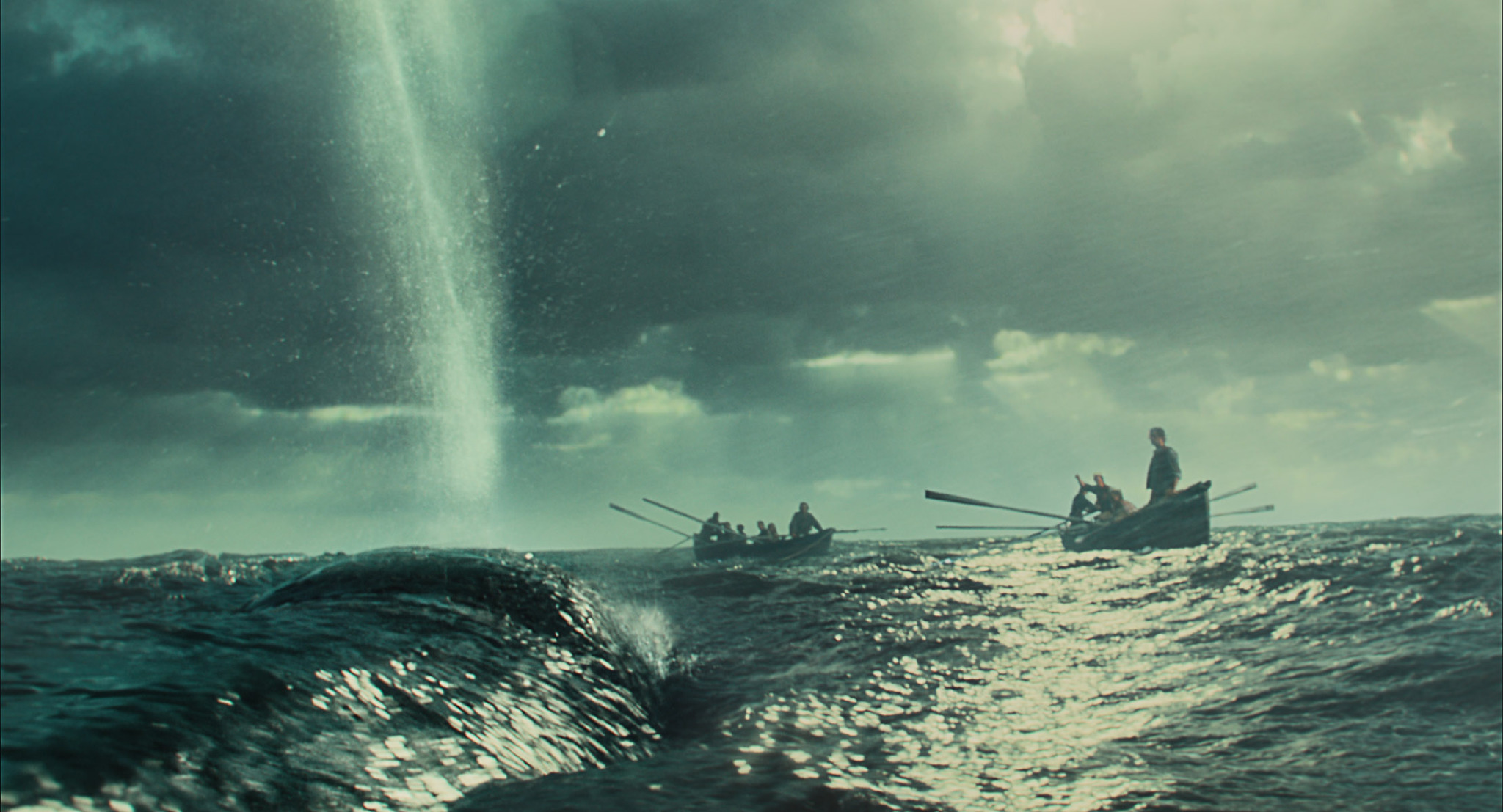🎬 In the Heart of the Sea (2015)

In the Heart of the Sea (2015) Review: A Visually Stunning Tale of Survival and Legacy
Directed by Ron Howard and based on Nathaniel Philbrick’s nonfiction book, In the Heart of the Sea is a gripping historical adventure that recounts the tragic sinking of the whaleship Essex in 1820—a story that inspired Herman Melville’s Moby-Dick. Featuring a talented ensemble cast led by Chris Hemsworth, the film combines thrilling action, harrowing survival drama, and stunning visuals to immerse viewers in the perils of the open sea. While its narrative occasionally falters, the film succeeds as a visceral and thought-provoking exploration of humanity’s relationship with nature and the cost of ambition.
Plot Overview: The Tragedy of the Essex
The story is framed by an older Thomas Nickerson (Brendan Gleeson) recounting his traumatic experiences aboard the Essex to a young Herman Melville (Ben Whishaw), who seeks inspiration for his next novel.
The narrative then shifts to 1820, as the Essex sets sail from Nantucket under the command of Captain George Pollard Jr. (Benjamin Walker) and First Mate Owen Chase (Chris Hemsworth). The two men clash from the outset, with Pollard’s inexperience and Chase’s resentment creating tension among the crew. Their mission: to hunt whales for oil, the lifeblood of the industrial world.
Disaster strikes when a massive sperm whale attacks the ship, leaving the crew stranded in the vast Pacific Ocean. What follows is a harrowing tale of survival, as the men face starvation, the elements, and moral dilemmas that test their humanity.
Chris Hemsworth as Owen Chase: A Commanding Performance
Chris Hemsworth delivers a strong performance as Owen Chase, the rugged and determined first mate whose leadership and resilience anchor the story. Hemsworth’s physicality and charisma shine in the action sequences, while his portrayal of Chase’s vulnerabilities adds depth to the character. His chemistry with Benjamin Walker’s Pollard underscores the tension between ambition and authority, a central theme of the film.
Brendan Gleeson and Ben Whishaw: A Reflective Framing Device
Brendan Gleeson brings gravitas to his role as the older Thomas Nickerson, haunted by the horrors of his past. His scenes with Ben Whishaw, as a curious and empathetic Herman Melville, provide a contemplative framing device that ties the Essex tragedy to the literary legacy of Moby-Dick. These quieter moments add emotional resonance to the film’s larger-than-life events.
Supporting Cast: A Cohesive Ensemble
- Benjamin Walker as Captain George Pollard Jr.: Walker portrays Pollard as a proud but flawed leader, whose inexperience contributes to the Essex’s fate.
- Tom Holland as Young Thomas Nickerson: Holland’s portrayal of the youngest crew member is both heartfelt and compelling, capturing the fear and resilience of a boy thrust into unimaginable circumstances.
- Cillian Murphy as Matthew Joy: Murphy brings sensitivity to the role of the ship’s second mate, adding another layer of humanity to the ensemble.
Themes: Survival, Ambition, and Nature’s Power
- Survival at All Costs: The film explores the psychological and physical toll of survival, highlighting the lengths to which people will go to endure.
- The Cost of Ambition: Chase’s and Pollard’s desire for success and dominance underscores the destructive consequences of unchecked ambition.
- Humanity vs. Nature: The conflict between the crew and the massive sperm whale symbolizes humanity’s fraught relationship with nature, emphasizing themes of respect and consequence.
Direction and Cinematography: A Visual Spectacle
Ron Howard’s direction is ambitious, balancing intimate character moments with sweeping action sequences. The cinematography by Anthony Dod Mantle captures the vastness and danger of the open sea with stunning clarity, using a mix of wide shots and close-ups to immerse viewers in the Essex’s perilous journey. The visual effects, particularly the sequences involving the sperm whale, are breathtaking and lend an almost mythical quality to the story.
Action and Pacing: Thrilling Yet Uneven
The action sequences, particularly the whale attacks, are visceral and gripping, showcasing Howard’s talent for creating tension. However, the film’s pacing occasionally falters, with some survival scenes feeling drawn out or repetitive. While this mirrors the crew’s prolonged ordeal, it may test the patience of some viewers.
Historical Accuracy: Fact Meets Myth
In the Heart of the Sea strives for authenticity in its depiction of the Essex tragedy, though it takes creative liberties to enhance the drama. The framing device linking the story to Moby-Dick adds a layer of mythos but occasionally detracts from the immediacy of the survival narrative. Despite these embellishments, the film effectively conveys the harrowing reality of 19th-century whaling.
Key Moments That Define In the Heart of the Sea
- The Whale Attack: The Essex’s encounter with the massive sperm whale is a visually stunning and emotionally charged sequence that serves as the film’s centerpiece.
- The Rafts: The crew’s desperate fight for survival after the shipwreck, including their harrowing moral choices, provides some of the film’s most intense and thought-provoking moments.
- The Final Reflection: The older Nickerson’s cathartic retelling of the tragedy to Melville ties the personal and historical threads together, offering a bittersweet conclusion.
Strengths of In the Heart of the Sea
- Stunning Visuals: The film’s cinematography and visual effects create a visceral and immersive experience.
- Strong Performances: The cast, led by Chris Hemsworth, delivers compelling and emotionally resonant performances.
- Epic Scope: The film captures the grandeur and danger of the sea, as well as the human spirit’s resilience in the face of overwhelming odds.
- Exploration of Themes: The story’s themes of survival, ambition, and humanity’s relationship with nature resonate deeply.
Weaknesses of In the Heart of the Sea
- Pacing Issues: Some sections of the film feel slow or repetitive, particularly during the survival segments.
- Underdeveloped Characters: While the central figures are compelling, some supporting characters lack depth.
- Shifting Focus: The framing device, while interesting, occasionally detracts from the immediacy of the Essex’s plight.
Legacy and Reception
In the Heart of the Sea received mixed reviews upon its release, with praise for its visuals and performances but criticism for its uneven pacing and lack of emotional depth. Despite this, the film has been appreciated for its ambitious scope and as a cinematic adaptation of a legendary maritime tale. It remains a visually impressive and thought-provoking exploration of survival and the human condition.
Fun Facts About In the Heart of the Sea
- Weight Loss for Authenticity: The cast underwent extreme weight loss regimens to realistically portray the crew’s starvation and physical decline.
- Tying to Moby-Dick: The film links the Essex tragedy to Herman Melville’s creation of Moby-Dick, offering a meta-narrative about the power of storytelling.
- Real-Life Inspiration: The story of the Essex was one of the most infamous maritime disasters of the 19th century, influencing literature and history alike.

Conclusion: A Visually Stunning and Ambitious Maritime Epic
In the Heart of the Sea (2015) is a visually breathtaking and emotionally resonant film that explores the limits of human endurance and the consequences of humanity’s ambition. While its pacing and character development may falter at times, the film’s powerful themes and stunning visuals make it a memorable cinematic experience. For fans of historical dramas, survival stories, or epic tales of the sea, In the Heart of the Sea is well worth the watch.